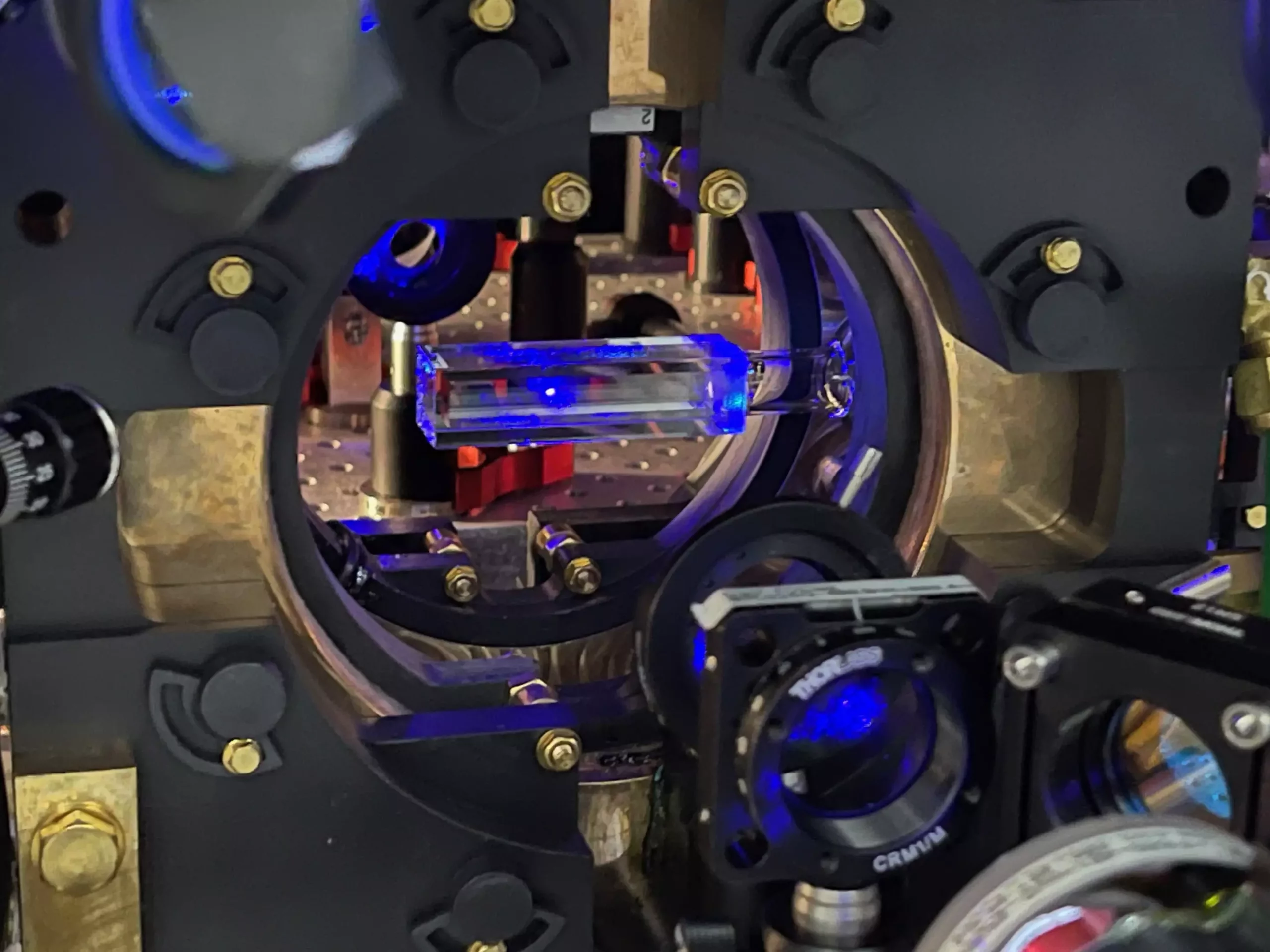Quantum physics, with its intricate and complex properties, has always required cutting-edge technologies to explore the microscopic world of materials. In recent years, quantum-gas microscopes have emerged as powerful tools in understanding quantum systems at the atomic level. Among these devices, the QUIONE quantum-gas microscope, developed by ICFO researchers in Barcelona, Spain, stands out. Named after the Greek goddess of snow, QUIONE is the only microscope in the world capable of imaging individual atoms of strontium quantum gases, making it a groundbreaking achievement in the field of quantum physics.
The primary goal of QUIONE is to utilize quantum simulation to simplify complex systems and address questions that conventional computers cannot answer. By bringing strontium gas to the quantum regime, placing it in an optical lattice for atom interaction, and implementing single atom imaging techniques, the ICFO research team has created a quantum-gas microscope with unparalleled capabilities. Unlike previous setups that relied on alkaline atoms like lithium and potassium, QUIONE harnesses the unique properties of strontium, offering a broader spectrum of possibilities for quantum experiments. The researchers recognized the vast potential of strontium for applications in quantum computing and simulation, leading them to embark on the creation of QUIONE.
To initiate the quantum simulation process, the researchers first cooled the strontium gas using laser beams, bringing the atoms to a near-motionless state at almost absolute zero temperature. This drastic cooling facilitated the manifestation of quantum phenomena such as superposition and entanglement. Subsequently, the activation of the optical lattice arranged the atoms in a grid-like structure, allowing for interactions and quantum tunneling between neighboring atoms. With the aid of their quantum-gas microscope, the researchers captured images and videos of the strontium quantum gas, observing the remarkable behavior of atoms hopping between lattice sites, a striking display of quantum tunneling.
One of the key findings of the research team was the confirmation of superfluidity in the strontium gas, a quantum phase of matter characterized by frictionless flow. By switching off the lattice laser and allowing the atoms to expand and interfere with each other, the researchers were able to observe the distinctive interference pattern, validating the presence of superfluidity in the sample. This groundbreaking discovery opens up new avenues for quantum simulation, with the integration of strontium into quantum-gas microscopes promising the exploration of more complex and exotic materials. As Prof. Tarruell aptly summarizes, the addition of strontium to the list of available quantum-gas microscopes heralds an exciting era in quantum simulation, where novel phases of matter are poised to emerge.
The QUIONE quantum-gas microscope represents a significant leap forward in the field of quantum physics, offering unprecedented insights into the behavior of quantum systems at the atomic scale. With its ability to image individual atoms and facilitate quantum simulations, QUIONE paves the way for new discoveries and advancements in the realm of quantum technology. As researchers continue to push the boundaries of quantum science, the innovative capabilities of QUIONE promise a future filled with untapped potential and exciting possibilities for unraveling the mysteries of the quantum world.


Leave a Reply